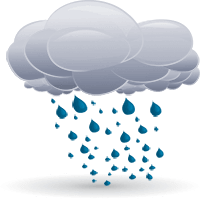As the temperatures climb into the 90s and above, most trees require more water, but more water means more costs. One helpful tip is to modify soaker hoses to save a few dollars. Soaker hoses are notorious for non-uniform watering. Meaning you often receive too much water from one part of the hose and not enough from the other part.
Patchy water application may not affect smaller trees, as the soaker will circle the tree several times, but can affect larger trees. For more uniform watering, Extension specialists suggest hooking the beginning and end of the soaker hose to a y-adapter to equalize pressure and provide more uniform watering. The parts needed are just a y-adapter and a female- to-female connector. If the y-adapter has shutoff valves so the volume of flow can be controlled, that can also be helpful. Too high of a flow rate can allow water to run off rather than soak in to the soil.
The position of your hose can also make a difference. On larger trees, the soaker hose can circle the trunk at least half the distance to the drip line. On smaller trees, the hose can circle the tree several times so only the soil that contains tree roots will be watered. To check if the watering is effective, the soil should be wet at least 12 inches deep. A metal rod or something similar can be used to check.
Dry soil is much harder to push through than wet and your probe will stop when it hits dry soil. How long it takes water to reach a 12-inch depth varies depending on the rate of water flow and soil. As a test when first watering the tree, record the amount of time it takes to reach a 12-inch depth of dampness. The tree can then be watered for that amount of time in subsequent watering.
Trees do not like to show us when they are extremely stressed, and we have seen a tremendous amount of tree damage and death resulting from the past couple of years of extreme drought. If you have the capabilities to do it, be sure to supply trees with ample moisture during these weeks of high temperatures and lack of rain. You have to weigh the cost of keeping your tree watered versus the cost of removing a large dead tree.
Information comes from Kansas State University horticulture expert, Cynthia Domenghini.
For more information regarding upcoming programs, Agriculture and Natural Resources, 4-H Youth Development, or K-State Research and Extension call the office at 620-583-7455, email me, Ben Sims, at [email protected], or stop by the office which is located inside the courthouse. Be sure to follow K-State Research and Extension- Greenwood County on Facebook for the most up-to-date information on Extension education programs and the Greenwood County 4-H program.


